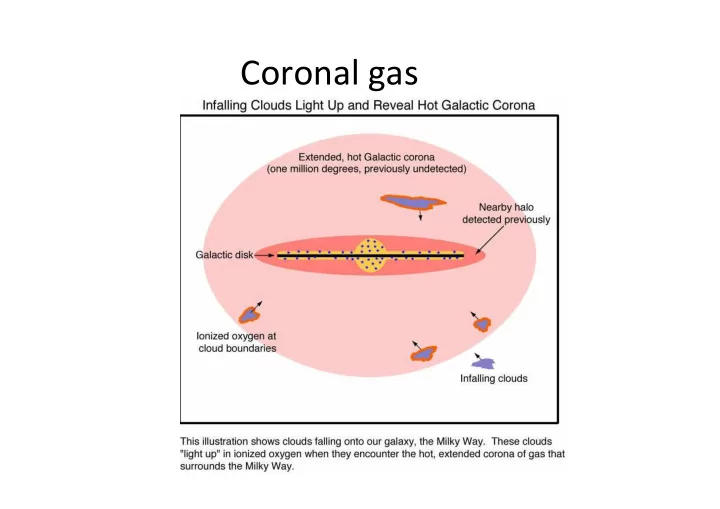

Coronal gas
Inverse Compton emission (= sca4ering of photons off rela8vis8c electrons) ~γ hν 2 hν ~γhν ~γhν Lab Lab Electron frame
Synchotron radia8on Non-relativistic case: balancing centrifugal and Lorentz force gives cyclotron frequency
Example: AGN NGC 4051 Red = disc component Green line = synchotron Blue line = inverse Compton
Ionised gas • The Galaxy seen in Hα
Con8nuum radia8on from ionised gas Free-free (aka bremsstrahlung = braking radia8on) Not necessarily X-ray í See ` High energy Astrophysics’ (Melia) p.91
Bremsstrahlung examples X-ray bremsstrahlung in cluster of galaxies (Perseus) : T=10^8K Radio bremsstrahlung (green) in star forming region NGC3603 cf
The importance of measuring L_ion • Measuring star forma8on rate in external galaxies 50 Log Φ ion 45 40 cf 35 0.5 1 1.5 2 Log M_*
Feedback from ionising radia8on Pink = H α emitting bubbles surrounding young stars: note spiral structure
A close-up of ionised bubbles in 30 Doradus
Simula8ons of ionising feedback in realis8cally inhomogeneous clouds Ionising photons can’t penetrate dense gas which con8nues to form stars. Strong ou[lows driven from low density channels but don’t carry much mass
Feedback from ionising radia8on can also promote star forma8on ì ç
Feedback from winds and supernovae • The ISM contains many bubbles blown by winds from individual massive stars • The effects of mul8ple supernovae from stars in a cluster can also be modeled as a `superwind’ which creates `superbubbles’ in the ISM ì
Are wind driven super-bubbles the key to understanding the structure of the foamy ISM? Can we understand the dis8rbu8on of holes of different sizes in terms of the distribu8on of clusters of different N?
Recommend
More recommend